Kuldhara
is an abandoned village on the outskirts of Jaisalmer (about 15 km
west of Jaisalmer), Rajasthan, India. The desolate village, which was
once prosperous and home to Paliwal Brahmins is now in ruins. It is
the only place in the world where an entire population of over 17,000
people abandoned their homes on their own accord and vanished into the
thick of the night. Kuldhara is believed to be established in 1291 by
the flourishing Paliwal Brahmins who were astute businessmen and
controlled the trade on the Silk Route to Persia (Iran) and Arabian
desert. They were also well known for their agricultural skills. They
had an overwhelming knowledge of water conservation and rain water
harvesting, and miraculously cultivated wheat and gram in the barren
wilderness. They were also very compassionate and cooperative.
The
Paliwal Bramins were natives of Pali (a small kingdom in Thar desert
of India). Depressed by the oppressive ruler of Pali, they migrated
to the area of Kuldhara in the then state of Jaisalmer in 1291. It is
believed that each new Paliwal family was gladly received into the 84
villages nearby Kuldhara with a brick and a gold coin from every
other family in the village. The brick was used to build a house
while the gold was used to start a business or a farm.
Kuldhara
was an excellent township, pretty big, well planned with structured
settlements, and straight-wide streets which ran in grids with houses
on either sides. There were about 600 households in the village, most
of which were double storeyed, well designed and aesthetic, most
probably designed to avoid heat storms of the desert. The inner
courtyard, which had a bathtub, and a tulsi-pinda (a small elevated
structure to grow tulsi plant) was basically meant for women.
The outer surrounding area of the house was used by men and domestic animals such as cows. There also used to be an underground cellar which was used to store valuables as well as food grains. These cellars were sealed few years back, after some foreigners discovered gold and valuable ornaments by using metal detectors, and tried to make off with most of the valuables. The houses were painted yellow from the native yellow colored mud and stones, while the floor was plastered with cow dung and clay. There were structures similar to a garage which opened into the streets and may have been used to park carts in. There were temples, step wells, water tanks, water harvesting system and cenotaphs among the most prominent structures.
The outer surrounding area of the house was used by men and domestic animals such as cows. There also used to be an underground cellar which was used to store valuables as well as food grains. These cellars were sealed few years back, after some foreigners discovered gold and valuable ornaments by using metal detectors, and tried to make off with most of the valuables. The houses were painted yellow from the native yellow colored mud and stones, while the floor was plastered with cow dung and clay. There were structures similar to a garage which opened into the streets and may have been used to park carts in. There were temples, step wells, water tanks, water harvesting system and cenotaphs among the most prominent structures.
The
Maharaja of Jaisalmer was only a titular head of the state at this
period, and the Deewan (Prime Minister) - Salim Singh (also called
Salum Singh), was the most powerful authority. He had the actual
power which he misused to the fullest extend. According to a native
folklore, Salim Singh, the malevolent Deewan of state, was well known
for his lecherous eye, and evil disposition. On day his eyes fell on
a beautiful girl, who was most probably the daughter of the chief of
Kuldhara. Enchanted
by her beauty, he asked to marry her, but his proposal was refused by
the chief as the Deewan was from a lower caste.
Infuriated by the refusal, he forced the chief to accept his proposal and gave an ultimatum of only a "single day" (24 hours). He threatened them to forcefully enter the village and seize the girl after the deadline. He also threatened the villagers to face grave consequences with heavy taxes if his marriage proposal was dishonored. The Paliwals were left with no choice then to accept the proposal, but their conscience didn't allow them to do so. The chief of Kuldhara desperately called for help, which was well responded by the chiefs of other villages. Out of anguish and despair, all the chiefs of 84 villages met in an emergency community council and decided to migrate from the village immediately, in the dead of the night to avoid death and dishonor. Hastily in dismay, they took whatever they could with themselves, buried the rest of their treasures and their belongings, and left their households and most of the livestocks behind, never to return.
However,
before they left, they cursed that the village would remain
uninhabited for times immemorial and those who attempt to dwell in
these villages shall be death. If anybody tried to dig out their
wealth and belongings, they would live to regret their act and
suffer. As the whole community moved out, their hearts were filled
with sorrow, and the thought of inhumanity and atrocities increased
their pain and suffering. Many years before, human skeletons were
found scattered in an alley off the
road. It is also believed that the Paliwals left their villages in
1825 on the day of Rakhabandhan. To mourn the unfateful event, they
do not celebrate the festival anymore.
Since
the hubbub of the villages had died down, they decayed spontaneously
and were transformed to ruins, stretched out in all directions. The
migrants had haunting memories of Kuldhara in their hearts which did
not fade away even after their death. They returned to the village
one by one as ghostly beings only to find that their native place is
in ruins. As centuries passed, memories faded with time, and the
legend of Kuldhara was forgotten. Piqued by curiosity, the only
visitors to the ruins of the villages were some people from neighboring areas.
However, in 1998, a couple of foreigners were seen wandering around Kuldhara, investigating and collecting the buried objects from the houses. The locals informed the police as soon as they noticed this unusual activity. The police arrived on the spot for investigation, and caught them red-handed digging the houses. Gold and silver items were recovered from their bags and they were jailed for the offense. Its rightly said "curiosity killed the cat". This event woke the archaeological department from slumber, and all of a sudden, Kuldhara was back in news as a major tourist attraction. The village was provided adequate security, and an entry fees was fixed for a visit. The local temple, and some of the houses which were the least damaged, were renovated and restored. People started worshiping in the temple. The visitors are only allowed during the daytime.
According to another school of thought, after migrating from Pali to Kuldhara, the Paliwals worked hard and with their knowledge and wisdom became affluent and prospered again, due to which they became the target of Mughal invasions. The Mughals wanted to plunder the wealth accumulated by the Paliwals but in most of the occasions, they stood against the raids successfully. The last raid in the 18th century, was a major attack in which the Paliwals lost lot of lives including their livestocks. Finally the Mughals soldiers were ordered to dump animal carcases in wells in order to weaken the opposition. All the wells in and around the village finally became poisonous which resulted in migration of the whole Brahmin community. The Paliwal Bhramins left Kuldhara and their surrounding villages overnight and moved to some other place. They also cursed the villages that it could never be inhabited, the fear of which still halts the natives from venturing the ruins. Neither did anybody saw the villagers leaving, nor could they figure out where they ventured. They simply vanished in the dead of the night never to return. However, it is now believed that they settled near Jodhpur in western Rajasthan, and in some areas of Gujrat, Madhya Pradesh, Maharashtra.


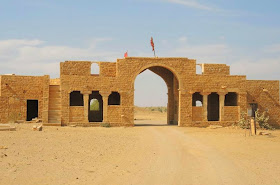
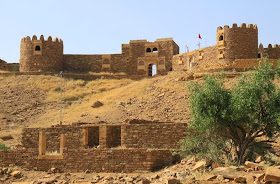

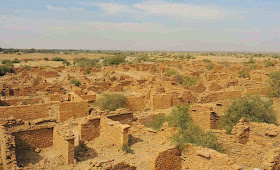
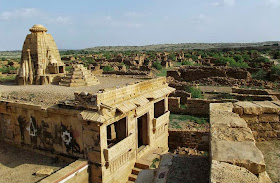

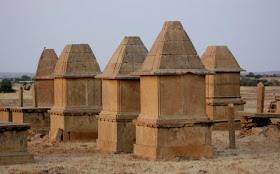

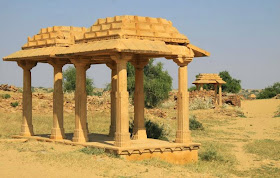

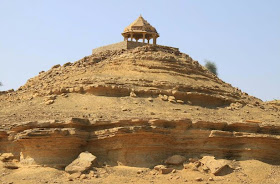

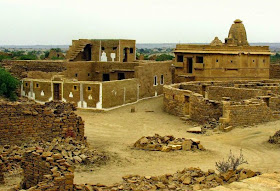
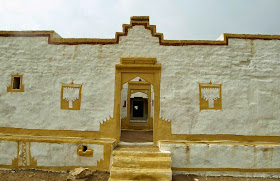

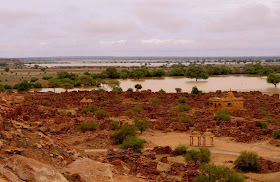

a well description--thanks
ReplyDelete